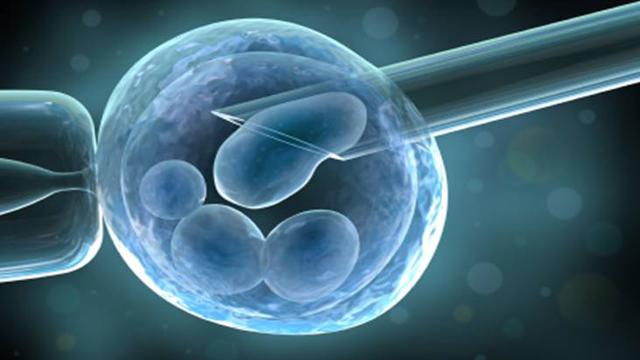The main purpose of restorative dentistry is to maintain the health of dental pulp so they remain vital. Until now, there was indeed no method that was considered the best way to protect dental pulp. Direct and indirect pulp capping treatment is a procedure where the infected vital pulp is coated or covered with a material to enhance healing, maintain pulp vitality, and protect the pulp from thermal and chemical stimulation.
Calcium hydroxide has traditionally been used as a covering material for infected dental pulp. Calcium hydroxide is expected to stimulate the pulp to maintain and repair the damage that occurs by forming a reparative dentin bridge. However, the main drawback of calcium hydroxide is its high solubility which leads to loss of material and the formation of imperfect reparative dentin, thus failing to provide a permanent defense against bacterial invasion.
In addition to calcium hydroxide, bioactive materials such as mineral trioxide aggregate (MTA) which are capable of forming apatite MTA are also bio-interactive where MTA releases the ions needed to stimulate dentin bridges. MTA has been reported to be superior to calcium hydroxide, but MTA still shows many disadvantages as a pulp protective material, such as the difficult application method. It takes a long time and also causes discoloration of teeth.
Stem cell derived from dental pulp (DPSC) is one of stem cell derived from teeth which is very promising for regenerative therapy. DPSC is multi-potential and can differentiate into various other types of body cells. DPSC can be used to regenerate periodontal tissue and teeth because they have the potential to form tissue such as bone and are able to form dentin and pulp. With the ability to differentiate into odontoblasts, DPSC can be used as a component for regenerative dentin formation in pulp capping therapy. The problem that still needs to be solved is how to provide sufficient DPSC for therapy.
As we know, the number of stem cell in the body is very limited, so is the number of DPSC. As a result, methods of increasing its amount in vitro without affecting their differentiation must be developed. Several types of growth factors have been used to increase the ability of stem cell proliferation such as FGF-2, BMP-2, or TGF-beta1. But safer, cheaper and more effective growth factors have not yet been discovered.
In our research, it has been found that concanavalin A (ConA) is a new factor that can increase osteogenic proliferation and differentiation of DPSC. ConA is a type of lectin with a molecular weight of 26 kDa derived from the Canavalia ensiformis plant. Plant lectins play an important role in cellular processes. Lectins have strong proliferation and differentiation abilities in various animal cells, including lymphocytes, osteoblasts, and chondrocytes. The addition of ConA can improve the process of mineralization or calcification of MSC derived from bone marrow. ConA can also increase levels of osteocalcin protein and BMP-2 in MSC culture media. However, the effects of ConA on the proliferation and differentiation of DPSC have not been studied.
In our study, ConA can increase DPSC proliferation in vitro. Lectins have been shown to have a strong effect on the proliferation and differentiation of various animal cells, including lymphocytes, osteoblasts, and chondrocytes. ConA induces morphological changes and lymphocyte cell proliferation. In chondrocyte cell culture, ConA induces changes from fibroblastic cells to spherical cells, and also increases aggrecan synthesis within 24 hours. This effect is greater than growth factors and hormones. On the other hand, increased DPSC proliferation due to addition of ConA does not occur in tumor cells. Lectins can inhibit proliferation and have a cytotoxic effect on tumor cells. Moreover, ConA induces apoptosis in human melanoma cells.
In this study it was also found that ConA could increase mineralization in DPSC cultures placed in osteogenic media. This finding is consistent with previous research that the addition of ConA can improve the MSC mineralization or calcification process. Increased osteogenic differentiation of DPSCs may be due to increased levels of BMP-2 in DPSCs culture. BMP-2 is an inductive growth factor for osteogenic differentiation of various stem cells. ConA can increase osteocalcin protein levels and BMP-2 in MSC culture. ConA also increases bone markers such as ALP, Runx2, osteocalcin, BMP2, BMP4, and BMP-6 at the level of mRNA expression. From this study it can be concluded that ConA is a new alternative material that can increase proliferation, preserve and improve stem cell growth from the dental pulp.
Author: Ketut Suardita, drg., Ph.D., SpKG(K)
Details of the research available at:
Suardita, Ketut; Arundina, Ira; Tedjosasongko, Udijanto; Yuliati, Anita; Peeters, Harry Huiz; Wijaksana, I Komang Evan; Surboyo, Meircurius Dwi Condro. (2019). Concanavalin A Enhanced Proliferation and Osteogenic Differentiation of Dental Pulp Stem Cells.EuropeanJournalofDentistry; 14(1): 123-127; https://www.thieme-connect.com/products/ejournals/abstract/10.1055/s-0040-1702900





